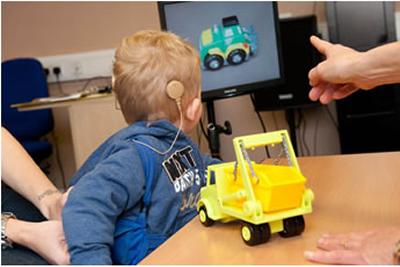Research project: National audit of bilateral cochlear implants - Dormant - Dormant
Having two cochlear implants instead of one can help with hearing in background noise and working out where a sound comes from (localisation).
Having two cochlear implants instead of one can help with hearing in background noise and working out where a sound comes from (localisation).
Before 2009, United Kingdom (UK) public funding was mainly only available for children to receive one cochlear implants. In 2009, the National Institute for Health and Care Excellence (NICE) published guidance for cochlear implantation following their review. According to these guidelines, all suitable children are eligible to have simultaneous bilateral cochlear implants (one cochlear implant in each ear done at the same operation) or a sequential (done in separate operations) bilateral cochlear implant if they had received the first before the guidelines were published. Fourteen UK cochlear implant centres formed a consortium to carry out a multi-centre audit.

The audit involved collecting data from children at four intervals: before bilateral cochlear implants or before the second implant, one year, two years and three years after bilateral implants. The measures included localisation, speech recognition in quiet and background noise, speech production, listening, vocabulary, parental perception, quality of life, and surgical data including complications. Data collection ended in December 2012; over 1000 children were included.
University of Southampton Auditory Implant Service

